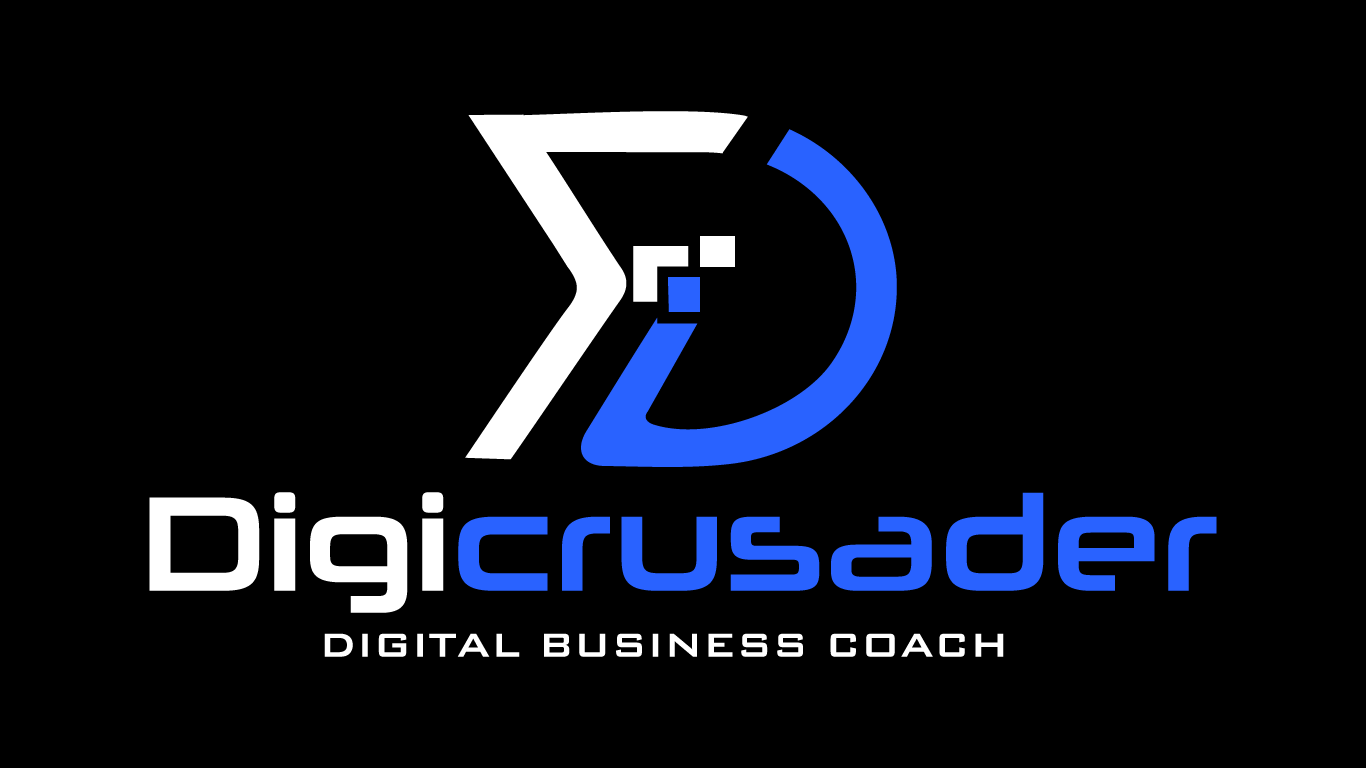Marketing strategies have, therefore had to evolve into something equally dynamic and personalized as the consumers. There isn’t much space left anymore for old-school marketing that ignores individuality to try to appeal to an oversized ensemble of consumers. Enter Hyper-Personalization; a brand-new idiom that leverages the latest advanced technologies and data analytics to deliver very personal, bespoke marketing experiences. In the following article, we hope to demystify the term hyper-personalization in the digital marketing concept and look at strategies, tools, and actual benefits of this concept in the real world.
What is Hyper-Personalization?
Hyper-personalization, in essence, closes the immediacy gap by using real-time data and advanced algorithms to provide deeply targeted content, products, or experiences to individual consumers, ASAP. While a baseline personalization strategy might call upon basic customer data, such as names or purchase history, hyper-personalization digs much deeper-to call upon the use of insights from behavioral data, contextual data, and, of course, predictive analytics-to make sure that every interaction, every experience, and every moment a customer has with your brand indeed feels like it was carefully constructed exclusively for them.
The Evolution of Personalization to Hyper-Personalization
Personalization has been a mainstay essentially in the marketing field for many years, and its strategies have since evolved from plain demographic targeting to more sophisticated approaches. The emergence of digital technologies only increased the pace at which personalization evolves by allowing marketers to collect vast amounts of data and process them. Hyper-personalization takes personalization a notch higher. AI and machine learning blend with real-time processing and analytics of data to create contextually relevant experiences.
Benefits of Hyper-Personalization
The benefits of hyper-personalization within digital marketing many, and continue to extend beyond a mere improvement in customer satisfaction into tangibles for actual business results:
- Enhanced Customer Experience: Better Customer Experience: Delivering highly relevant content and offers brands can create seamless and enjoyable customer journeys, hence improved satisfaction and loyalty.
- Increased Conversion Rates: Higher Conversion Rates: Personalized recommendations along with personalized experiences on the whole, raise significantly the probability of conversions because customers are shown only those products and services that address their needs and preferences.
- Better Customer Retention: Higher Customer Retention: Personalization leads to deeper brand connections with customers because of which they exhibit increased brand loyalty and less churn.
- Improved Marketing ROI: Hyper-personalized campaigns are more effective and ensure that all marketing resources are optimally used and deliver higher ROI.
- Competitive Advantage: The power of hyper-personalization allows such brands to stand out in overcrowded markets, thereby attracting, and more importantly, retaining more customers through better experiences.
Key Strategies for Implementing Hyper-Personalization
At its implementation, hyper-personalization requires a holistic approach where brands engage data analytics, AI, or customers’ feelings to make a purchase. Such crucial strategies include:
1. Data Collection and Integration
The prerequisite for hyper-personalization is data. Brands need to collect and bring together data from a multitude of sources. The major sources of data include transactional data, behavioural data, social media interactions to name a few. This data needs to be brought together in one place-the customer data platform or CDP. This forms the source for getting an all-encompassing view or understanding of each customer. Right integration of data gives the impression that every interaction a customer has with the brand is tracked and analysed, thereby allowing for the most accurate personalization.
2. Advanced Segmentation
Traditional segmentation relies on more broad buckets, such as age, gender, or location. In hyper-personalization, you need to segment at the level of behaviour, preferences, and immediate context in real-time. This permits the creation of micro-segmentation targeted with highly specific content and offers. The capability of exploiting advanced techniques such as Clustering algorithms and Predictive modeling allows for the discovery of unique segments often missed by traditional methods.
3. AI and Machine Learning
Artificial intelligence and machine learning are integral parts of the process of processing big data and mining all possible behavioural patterns to help personalization. AI enables making real-time decisions about what to present to a customer at a given moment. Personalization by AI can basically manifest itself as a product recommendation function, but it can also manifest itself in dynamic content elements on Web sites that change as a user interacts more with them. Machine learning models can learn from new data and improve the accuracy and effectiveness of such personalization over time.
4. Dynamic Content Creation
Dynamic content has to be developed that could be personalized for a particular user. These personalized emails, customized web pages, or ads keep changing with every action and preference of each user. Dynamic creative optimization enables the companies to do so automatically on such a big scale. The message design by using data in dynamic content creation allows for crafting messages aligned to individual customer sentiment and so their engagement chances to be your customer increase.
5. Omnichannel Personalization
Nowadays, customers engage brands through multiple touchpoints like websites, mobile applications, email, and social media, to name a few. Today, any hyper-personalization strategy must be able to provide a seamless and consistent experience regardless of the touch point. Data integration and personalization across touch points are no longer an option but a necessity that enables an integrated customer experience. In that respect, omnichannel personalization ensures a customer experiences a coherent and relevant experience regardless of how and where they interact with a brand.
Tools for Hyper-Personalization
A robust set of tools of collecting data, analysing it, and delivering the content is required to put hyper-personalization into practice. Some of the most essential tools are as follows:
1. Customer Data Platforms (CDPs)
CDPs collect customers’ data from various sources into one source for each customer. That can be used for developing personalization. Some of the most popular CDPs are Segment, Tealium, Adobe Experience Platform. It brings together your data finally to get actionable insight, which you can leverage to create personalization experience at scale.
2. AI and Machine Learning Platforms
AI and Machine learning platforms assist brands in processing large volume datasets. Besides helping brands have real-time and contextual experiences, these platforms can also support predictive analytics, recommendations, and dynamic content creation, among other features. Popular AI platforms include IBM’s Watson, Google’s AI, and Amazon with its SageMaker. The computing power and sophistication inherent in these algorithms enable deeper personalization.
3. Marketing Automation Tools
Marketing automation tools, for instance, make it much easier to arrange more personalized content across different channels. These platforms automate many of such tasks as email marketing, social media posting, ad targeting, etc., in order to ensure that the increasingly targeted message reaches the right targeted audience at the correct time. Examples include: HubSpot, Marketo, Pardot. This way, using Correspondingly, through automation, it becomes much easier for marketers to scale their personalization efforts efficiently and thus deliver quite timely and continuous very tailored messages.
4. Dynamic Creative Optimization (DCO) Tools
DCO tools are utilized by which the marketers can deliver disparate messages to different segments in real-time basis. dynamic ad content as per the behaviour and preference of the target audience These may generate through tools based on data. Some of the major DCO platforms are: Thunder, Jivox, Ad-Lib.io, etc. These DCO tools increase the relevancy of ad campaigns hence improve the engagement rate and conversion.
5. Analytics and Insights Tools
Measuring Effectiveness of Hyper-Personalization Efforts In a bid to establish whether hyper-personalization is doing its job, brands need the right analytics tools. Such tools then keep tabs on and analyze all interactions with customers. One will thus understand what is working and what is not, hence continuous optimization. Google Analytics, Mixpanel, and Amplitude are common choices. Analytics tools allow marketers to see the effects of their personalization strategies, thereby allowing them to make data-driven decisions about refining their tactics.
Hyper-Personalization Examples
Let us see a few examples to understand the power of hyper-personalization:
1. Netflix
The classic example of hyper-personalization is Netflix. Sophisticated algorithms monitor viewing behaviour and preferences to make recommendations at a personal level for each user. Even the thumbs or artwork on the shows and movies differ based on the history seen by the user. Netflix makes sure that its users are invested and motivated to go out and search for more shows and movies shaped as per their taste.
2. Amazon
Another hyper-personalization characteristic is Amazon’s recommendation engine. By using whatever a customer purchased or viewed in the past, and even what’s on their wish list, highly targeted and extremely relevant product recommendations drive conversions and average order value. An art form that seems to anticipate needs and preferences appears to help to explain its success. Personalized shopping experiences enhance customer satisfaction and brand loyalty in a way that cements its status as an e-commerce leader.
3. Spotify
Spotify implements hyper-personalization, building an individualized experience of listening to each of its users. Analysing the habits of listening, preferences, etc, the algorithms for the platform create “Discover Weekly” and “Release Radar” individual playlists. Thus, apps stay regularly interesting for the services offered and invite users to discover new music tailored to their preferences.
The Role of Kaggle in Advancing Hyper-Personalization
Kaggle is a platform for data science competitions that, to a great extent, supports the development of hyper-personalization. By creating a space for data scientists to work together, to share datasets, and to come Upendo with amazing solutions, Kaggle has fostered the development of the latest personalization algorithms. About Kaggle competitions, this platform focuses on real-life challenges associated with personalization, predicting the behaviour of users, or optimizing recommendation systems, to name but a few. The community-driven nature of Kaggle brings acceleration in the development of new techniques and technologies, fostering innovation in hyper-personalization.
Challenges and Considerations
Despite the immense benefits of hyper-personalization, there are a couple of challenges and considerations that also qualify as such:
1. Data Privacy and Security
There is a huge problem of privacy and security with the gathering and usage of such massive volumes of personal data. Brands will have to comply with several regulations such as GDPR and CCPA, apart from efficiently executing different measures to protect customer data. The challenge is going to be maintaining the level of customer trust while reassessing strategies to collect and use that data transparently.
2. Balancing Personalization and Privacy
Consumers are more aware of how their data is being used and might be wary of overly invasive personalization. It is for that reason the brands’ balance of personalized experience and customer privacy has become a matter of sensational topic performance. Transparency and communicated relay about data usage are more than necessary. Providing customers with control of their data and personalization outcomes might even increase trust and acceptance.
3. Ensuring Accuracy and Relevance
The success of hyper-personalization depends upon the quality and relevancy of information. If data is not accurate, then there will be wrong personalization; hence the customers will not get a good experience. The data has to be managed continuously with quality. Brands have to audit their data continuously and update it so that it is accurate and relevant for enhancing personalization strategies.
4. Scalability
At scale, implementation of hyper-personalization is quite hard, especially for some of the bigger brands where the numbers are mammoth. Massive investment in stitching along with technology will be needed for delivering seamless consistency in personal experiences across all the touchpoints. Brands will need massive investments in scalable infrastructure along with those types of technologies that would deal with huge volumes of data to yield real-time, truly personalized experiences.
Future Trends in Hyper-Personalization
Technology advances and changing consumer expectations shape the future for hyper-personalization. Following are some trends to watch:
1. AI and Machine Learning Advancements
As AI and machine learning are getting more sophisticated, so is the ability to collect, process, and synthesize data to allow for the most accurate personalization yet, instead driving a much deeper level of customer engagement. With advanced techniques such as deep learning, personalization will be even more accurate and effective, so that brands can offer their customers even more relevant and timely experiences.
2. Real-Time Personalization
Real-time personalization-developing content and offers on the fly in response to what users are doing-will gain traction. This demands powerful data infrastructure and sophisticated algorithms to ensure smooth experiences. Real-time personalization deepens customer engagement and fosters satisfaction with timely and relevant interactions-communications aligned to their individual needs and preferences.
3. Predictive Personalization
Predictive personalization ensures that it anticipates the customers’ needs and preferences even before they could say so. As it is very proactive, it creates interactions that are very relevant and timely, more so than what enhances the general customer experience. Because the predictive model can dig deep into the historical data to find patterns indicative of future behaviour, brands can give their customers personalized experiences that reach them deeper.
4. Personalization Beyond Digital Channels
Though hyper-personalization is essentially worked upon through online channels, of late there has been huge interests in the continuation of personalized experience even in offline worlds. For that to happen, the personalized in-store experience or the tailored customer service interaction may actually prove really effective. The blending of the digital and offline personalization efforts is what will give way to a seamless and cohesive customer journey where the overall satisfaction level surges and creates brand loyalties.
Conclusion
Hyper-personalization is, in fact, the cherry on top-even the very soul of new-age marketing-which weaves a magic spell by combining data and AI with customer-centricity to create experiences unlike anything else. Brands can eventually reap the true potential of hyper-personalization with regard to driving engagement and eliciting loyalty and eventually contributing to the growth of a business if they understand and make use of the strategies and tools discussed. With advanced technology and changing consumer expectations, the role of hyper-personalization in digital marketing is only going to grow exponentially; hence, it will be an essential ingredient of any forward-thinking marketing strategy.
Brands that invest in the right tools to move in perfect sync with the evolving consumer, welcome AI and machine learning for deeper insights, and not at the expense of customer privacy and data veracity-will overcome the challenges of hyper-personalization and reap its rewards. Indeed, marketing has a very personalized future, and those who can aptly master the art and science of hyper-personalization will lead the pack in creating meaningful, lasting connections with their customers.











